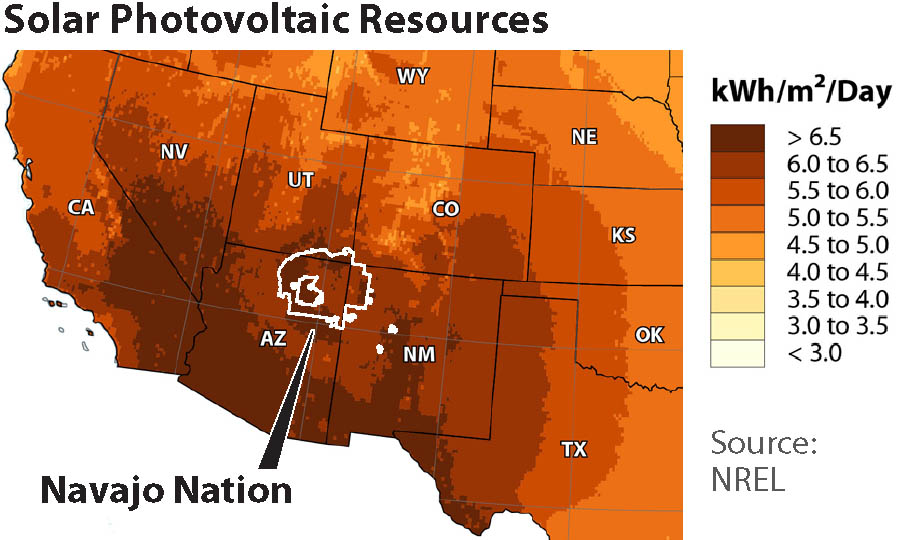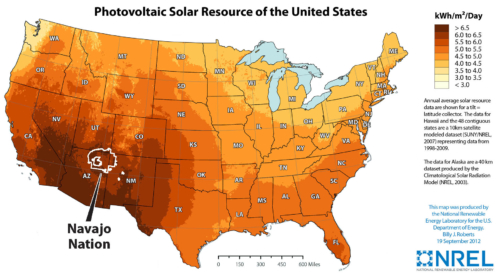IEEFA Arizona: Growing interest in developing Navajo utility-scale solar industry

Oct. 31, 2018 (IEEFA) — Momentum is growing around modernizing tribal renewable-energy policies on the Navajo Nation of Arizona, Colorado, New Mexico and Utah, according to a report published today by the Institute for Energy Economics and Financial Analysis.
The report —“Growing Interest in Developing Navajo Utility-Scale Solar Industry: Policy Momentum and Grassroots Support; Vast Tribal Natural Resource Remains Largely Untapped” — details movement on three fronts:
- In an evolving tribal utility policy toward more utility-scale solar, a shift driven in part by the success of the Kayenta Solar Facility, a 27.3MW, 200-acre project that came online in 2017 and is now feeding into the regional grid. Kayenta, seen as a pilot for similar initiatives, is also serving as a training ground for large scale solar-installation-and-construction expertise.
- In central tribal government support for more solar infrastructure in general, including for community-owned solar farms that allow for revenue streams to be shared with local tribal chapters and land owners. Of note on this front: The creation in recent weeks of the Office of Energy Resources and Development.
- In campaigns to bring community-owned solar projects into locales that have access to key transmission lines and where ownership models are expected to include revenue streams for the Navajo Nation and local tribal chapters alike.
The emerging interest in utility-scale solar is driven in no small part by the large-scale deployment of solar generation throughout the Southwest, and the report notes how Navajo lands remain something of an island in a growing regional sea of utility-scale solar installations.
Another factor driving the more aggressive pursuit of utility-scale uptake: The likely closure of the coal-fired Navajo Generating Station, a major employer and tax-base component.
The report concedes that a Navajo solar industry could be one building block in a post-coal economy.
“While utility-scale solar is not seen as a replacement for NGS job and revenue losses, it can be a component of a new tribal energy economy that can bring distributed economic benefits and greater energy independence to the region,” said Karl Cates, an IEEFA research editor and author of the report.
On the community-solar front, opportunities are seen now at Cameron, LeChee, and Kayenta. Navajo National officials are modernizing energy policy to help encourage development of more renewables. And NTUA officials say they expect to install more utility-scale solar across their jurisdiction.
Development openings are appearing fast, and the report builds on one previously published by IEEFA and Diné Innovative Network Economies in Hózhó that said:
“As the solar-industry footprint expands, Navajo communities are being courted by outside interests to participate in fast-moving development deals. The Navajo Nation, only 67 years old and built from a history of trauma, is not well-equipped to assess these opportunities, but tribal-chapter communities can get up to speed with proper advice and consultation.”
While few locales in the U.S. are richer in solar potential then the Navajo Nation, few models for utility-scale solar generation exist yet on tribal lands.
Media Contacts:
Karl Cates [email protected] 917 439 8225
About IEEFA:
The Institute for Energy Economics and Financial Analysis (IEEFA) conducts global research and analyses on financial and economic issues related to energy and the environment. The Institute’s mission is to accelerate the transition to a diverse, sustainable and profitable energy economy.











